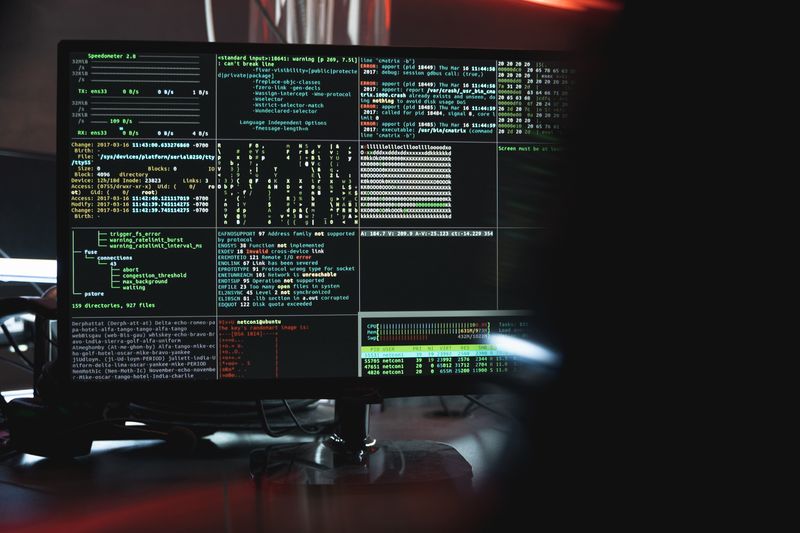Analysis: The Growing Threat of Ransomware-as-a-Service (RaaS) Groups
The Rise of Ransomware
Ransomware attacks have become an increasingly prevalent and concerning issue in recent years. Cybercriminals employ various tactics and techniques to breach organizations, encrypt their files, and demand hefty ransoms in exchange for the decryption keys. These attacks, often facilitated by the use of ransomware-as-a-service (RaaS) providers, have wreaked havoc on businesses and generated significant profits for the perpetrators.
Earlier this year, law enforcement authorities made significant headway in disrupting the operations of the Hive cybercriminal group. Hive, like many other RaaS providers, offered a platform where affiliates could purchase a license for their services and in turn deploy ransomware attacks on a global scale. As the case unfolded, it shed light on several important trends regarding RaaS, its reliance on cryptocurrency, and effective defense strategies against similar groups.
The Role of Cryptocurrency in RaaS
One of the key reasons ransomware groups like Hive continue to thrive is the use of cryptocurrency as a means of payment. Cryptocurrency provides an anonymous and borderless method of transferring funds, rendering traditional banking systems obsolete in the realm of cybercrime. This enables attackers to demand ransoms from victims without the need for conversions or approval from financial institutions.
The price of cryptocurrency, particularly Bitcoin (BTC), plays a crucial role in determining the value of ransom demands. Attackers adjust the requested amount of cryptocurrency based on the current token price. For instance, if a ransomware group wants to extort $50,000 from a victim, they will convert the amount into the prevailing token price and demand an equivalent sum. While most cryptocurrencies can be traced, many ransomware groups operate from countries where their activities are tolerated as long as they target victims outside their jurisdiction.
The Need for Global Cooperation
The crackdown on the Hive group stands out as a notable success in global law enforcement efforts against ransomware operations. It required joint cooperation between federal authorities from multiple countries, highlighting the growing recognition that a solely defensive approach is inadequate in combating this issue. Governments worldwide are increasingly taking an offensive stance to dismantle ransomware groups and disrupt their infrastructure.
Recent takedowns of other ransomware groups like REvil and DarkSide demonstrate this shift in approach. Such collaborative efforts are crucial in not only hindering the immediate operations of these groups but also sending a clear message that these activities will not go unpunished.
Varying Tactics and Security Challenges
RaaS groups employ a broad range of tactics and techniques to breach organizations and carry out ransomware attacks. Each group and its affiliates may have distinct strategies, making it challenging for security teams to defend against them effectively. This necessitates a holistic defensive posture that incorporates multiple layers of security, also known as defense-in-depth mechanisms.
Hive affiliates, for example, have been known to exploit vulnerabilities such as Remote Desktop Protocol (RDP) without multifactor authentication, stolen credentials, phishing campaigns, and software vulnerabilities. Hence, organizations must adopt a comprehensive set of solutions to counter these multifaceted attacks. This includes implementing strict policies like multifactor authentication, investing in email security and phishing training, and establishing robust patch management systems.
The Importance of Checks and Balances
Ransomware groups like CL0P have been observed targeting software supply chain companies to gain access to other organizations. By compromising these trusted entities, they can deploy ransomware attacks or steal sensitive data. To protect against these supply chain attacks, a comprehensive defensive posture that includes checks and balances is crucial. This means having multiple security solutions in place to detect and mitigate any weaknesses or false positives.
Email security and phishing training emerge as a crucial component of an effective defense strategy. The majority of threat actors rely on phishing emails as the initial vector for delivering malware, making it a prime starting point for organizations to address. According to Verizon’s “2023 Data Breach Investigations Report,” most breaches originate from phishing attacks. Therefore, organizations should prioritize the implementation of robust email security solutions and provide ongoing training to enhance employee vigilance against phishing attempts.
Editorial: The Urgency to Combat Ransomware
The proliferation of ransomware attacks and the rise of RaaS groups highlight the urgent need for a collaborative and comprehensive approach to combat this evolving threat. Governments, law enforcement agencies, and cybersecurity professionals must continue to enhance their offensive capabilities against these malicious actors.
While takedowns like that of the Hive group are encouraging, they are merely temporary setbacks. Ransomware attacks remain a persistent and lucrative business for cybercriminals. The global community must maintain vigilance and strengthen international cooperation to disrupt the infrastructure and funding streams of ransomware groups more effectively.
Advice: Protecting Against RaaS Attacks
For organizations seeking to fortify their defenses against RaaS groups, a multi-layered security strategy is paramount. These key measures should be considered:
1. Implement a Zero-Trust Network:
Adopt a zero-trust approach to network security, ensuring that multifactor authentication is required for all access points. Zero-trust networks treat every user, device, or connection as potentially compromised, mitigating the risk of unauthorized access.
2. Invest in Email Security Solutions:
Phishing remains the most common entry point for ransomware attacks. Deploy robust email security solutions that can detect and block phishing attempts, malicious attachments, and suspicious links.
3. Provide Ongoing Phishing Training:
Educate employees about the dangers of phishing attacks and train them to recognize and report suspicious emails. Regularly reinforce this training to keep security awareness high.
4. Maintain Comprehensive Patch Management:
Keep software and systems up to date with the latest security patches. Regularly scan for vulnerabilities and address them promptly to minimize the risk of exploitation.
5. Establish Asset Management Practices:
Maintain an inventory of all systems, software, and devices in your network. This enables proactive monitoring, rapid response to security incidents, and effective patch management.
6. Have Redundant Backup Solutions:
Regularly back up critical data and ensure that backup systems are isolated from the main network to prevent ransomware from encrypting those backups. Verify the integrity and accessibility of backups regularly.
7. Foster Industry Collaboration:
Encourage collaboration and information sharing across industries to collectively fight against ransomware attacks. This can involve sharing threat intelligence, best practices, and lessons learned to strengthen defenses.
8. Support Law Enforcement Efforts:
Cooperate with law enforcement agencies and report any ransomware incidents promptly. Providing information and evidence can contribute to ongoing investigations and the disruption of ransomware groups.
Conclusion
The recent takedown of the Hive cybercriminal group sheds light on the evolving landscape of ransomware attacks and the critical role played by RaaS providers. To counter these threats effectively, it is imperative that governments, organizations, and individuals come together to enhance cyber defenses, collaborate internationally, and develop robust security measures. Through concerted efforts, the fight against ransomware can yield positive results and safeguard individuals and businesses from being held hostage by cybercriminals.

<< photo by Tima Miroshnichenko >>
The image is for illustrative purposes only and does not depict the actual situation.
You might want to read !
- The Silent Invasion: Lazarus Group’s Covert Operations Leveraging Zoho ManageEngine Vulnerability
- The Vulnerability of TP-Link’s Tapo Smart Bulb: A Warning for Smart Home Security
- FBI’s Warning: Recent Barracuda ESG Zero-Day Patches Fail to Protect
- Unveiling the Enigma: How a Stealthy Malware Exploits Wi-Fi Scanning for Device Location
- The Rise of “Telekopye”: Exploring Russia’s Powerful New Phishing Bot
- Rockwell ThinManager Vulnerabilities: Protecting Industrial HMIs from Potential Cyber Attacks
- North Korea’s Lazarus Group: How a GUI Framework Enabled Their Stealthy RAT
- “Hacking Group KittenSec: Exposing Corruption with Unparalleled Power”
- Cisco Patches Critical Vulnerabilities: Safeguarding Switches and Firewalls from DoS Attacks
- The Growing Importance of Digital Identity Protection: SpyCloud Secures $110 Million in Funding
- In Other News: Assessing the Landscape of macOS Security, Keyboards, and VPNs
- Securing Your macOS: Unveiling Security Reports, Exposing Keyboard Spying and Unmasking VPN Vulnerabilities
- The Surge of Rhysida Ransomware: A Growing Threat to Healthcare Operations




